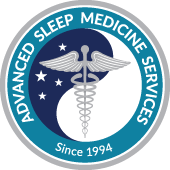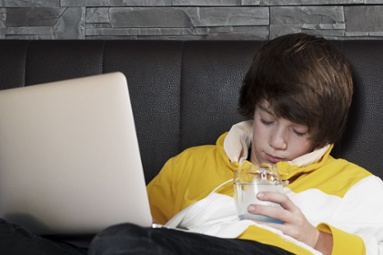 How Much Sleep Does My Child Need?
How Much Sleep Does My Child Need?
The National Sleep Foundation updated their recommended sleep duration guidelines for all age groups in 2015 based on an expert panel’s comprehensive review of published scientific studies on sleep and health. Ranges are given instead of a hard number for each age group. The experts acknowledge that there is individual variability and the range is intended to be a starting point for individuals to discuss sleep with their healthcare providers.
For school-aged children 6-13 years old, the recommendations is between 9-11 hours, noting that 7-8 hours or 11 hours may also be appropriate for some children.
For teens 14-17 years old, the recommendation is 8-10 hours with 7 hours or 10-11 hours for some teens.
To learn more about this new guideline, check out this blog post.
Sleepy Students Perform Worse in School
According to the National Sleep Foundation’s 2014 Sleep in America poll, one quarter of parents estimated that their children get at least an hour less of sleep on school nights than they need.
Research shows that kids who are well-rested (without sleep problems) perform better in school. Brazilian researchers studied children aged seven to ten who attended public schools. They found, on average, kids with sleeping problems performed more poorly in both math and language than well-rested students:
- 13% of children with difficulty sleeping had failing grades in Portuguese, compared to 8% of those without sleep problems.
- 25% of kids with disrupted sleep had failing math grades, versus 8% of children without trouble sleeping.
- Mean test scores in both subjects were lower for the poor-sleep group than the well-rested group.
Another study found that when children with sleep-related breathing disorders, like sleep apnea, were treated for their condition, their academic performance improved significantly (see below to learn more about sleep apnea in children).
Researchers tested the bottom 10th percentile of a 1st grade class and found that an astonishing 18% of them had sleep-disordered breathing. That’s compared to the estimated 2-3% that have childhood sleep apnea overall. When the affected students were treated for their sleep disorders by having a tonsillectomy to remove enlarged tonsils (a common cause of sleep apnea in children), their mean grade point average rose by nearly half a point(from 2.43 to 2.87). Clearly, sleep apnea significantly reduces academic performance in affected grade-school-aged children.
Limit Screentime Before Bed
Light, in general, keeps you up at night.
Many people, even those without a diagnosed sleep disorder such as circadian rhythm disorder, are sensitive to evening light. People diagnosed with this disorder are unable to sleep and wake at the times required for normal work, school and social needs.
All animals and even plants, have natural biological circadian rhythms which are controlled by our biological clocks and work on a daily time scale (wake up when the sun rises, sleep when the sun sets). Exposure to artificial light after the sun has set can fool the body into thinking it’s playtime, not sleepy time.
Additionally, the light from TVs & screens suppresses melatonin production, making it harder to sleep at night.
Blue light is particularly harmful. This wavelength suppresses melatonin (the hormone that helps to regulate our circadian rhythm) more vigorously than other wavelengths. Go figure, many of the new energy efficient light sources (like those light bulbs you’re supposed to buy) including our favorite electronic devices (smartphones, tablets, TVs), produce high concentrations of this light. Experts recommend shutting off electronics long before bedtime. Read more here about how to keep electronics out of the bedroom.
Obstructive Sleep Apnea Affects 2-3% of Children
Many parents might never consider that their children have OSA because of the misleading stereotype of a sleep apnea patient as a middle-aged man. In fact, an estimated 2-3% of children suffer from childhood sleep apnea. However, the causes—and, thus, the treatment—for kids can be very different than for adults.
Sleep apnea occurs when throat tissue obstructs a person’s airway while they are asleep, blocking their breath, which leads to restless sleep and unhealthy strain on the body. Thus, one of the most obvious symptoms that your child has this condition is heavy snoring, gasping, snorting, choking, or uneven breathing during sleep. Frequent bedwetting or nightmares, strange posture while sleeping, and waking up with headaches or a dry throat could also betray troubled sleep.
The most common cause of childhood sleep apnea is having overly large tonsils and adenoids (a soft mass of tissue located just behind the uvula) that block off the airway during sleep. Surgery can be used to remove the tonsils and adenoids (tonsillectomy and adenoidectomy). This procedure cures sleep apnea in 80-90% of children.
Another common cause of sleep apnea in both kids and adults is being overweight or obese. Fortunately, children still have the ability to grow out of the sleep disorder, so such kids are strongly encouraged to lose weight through eating healthier and exercising. This will not only improve their sleep patterns, but their whole lifestyle.
Sleep apnea is diagnosed in children using an overnight test in a sleep center, called a polysomnogram. If you are considering scheduling a sleep study for your child, see our blog post on how to prepare your child for a sleep study.
Other Sleep Disorders Affecting Children
Sleep centers across the country test and diagnose thousands of patients yearly. Interestingly, at Stanford’s sleep center approximately 25% of the patients tested are children.
The Mayo clinic suggests that as many as 30% of children suffer from some sleep disorder. Undiagnosed, these sleep disorders can lead to serious health issues affecting the individual into adulthood.
Some common sleep disorders in children include night terrors (partial arousals from sleep accompanied by shouting or emotional outbursts), sleep walking, nightmares, and bedwetting. Adolescents can also experience something called delayed sleep-phase disorder, in which they want to go to bed very late and have trouble waking up in the morning. Most of the time, children grow out of these conditions.
Are you concerned that your child may have a sleep disorder? We perform sleep studies on children over one year old. Talk to your doctor and contact us when you’re ready to schedule a sleep study.
Sources:
Luciane Bizari Coin de Carvalho, et al. “Symptoms of sleep disorders and objective academic performance.” Sleep Medicine Journal.
Gozal, David M.D. “Sleep-Disordered Breathing and School Performance in Children.” Pediatrics.
Crowley, Stephanie J. et al. “Sleep, circadian rhythms, and delayed phase in adolescence.” Sleep Medicine.
http://www.mayoclinic.org/medical-professionals/clinical-updates/neurosciences/sleep-disorders-profound-effects-pediatric-health
Other posts you may find interesting:


